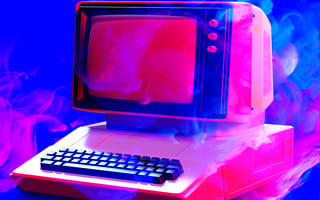Vaporware is what happens when a tech company’s concepts, ideas and prototypes don’t become reality. Instead, they disperse into the ether — but their legend lives on.
What Is Vaporware?
Vaporware is hardware or software that tech companies develop and advertise, but then abandon, never releasing it to the general public.
But why do these projects fail?
There’s been wide debate over the years on just what vaporware is. In 1995, the New York Times described vaporware as “the most misunderstood concept in the software industry” before detailing how a judge ruled that vaporware was a sinister plan, concocted by companies, of publicly announcing a new product so far in advance so customers wouldn’t purchase a similar product from a rival. The story also details the origin of the term, which dates back to 1983, though with less diabolical implications. Essentially, vaporware is what happens when a project doesn’t have legs and fails.
What Is Vaporware?
Vaporware refers to hardware or software products, like computer systems and video games, that are never released to consumers for purchase. Famous examples of vaporware include phones, computers and video game consoles.
Companies behind some of the most famous examples of vaporware typically cite issues related to high cost, functionality or even health concerns for abandoning these projects. In some cases, the product fails to live up to the manufactured hype despite the company behind it shelling out millions of dollars for development and marketing.
And, of course, there are products that were once deemed vaporware, but are no longer, because they now exist, like smartphones with foldable screens. And then there are the products consumers are led to believe might be coming out soon, but keep getting pushed back and delayed. Are they destined to join the ranks of memorable vaporware?
Some devices that eventually evolved to vaporware status never even made it out of the concept phase, while others became prototypes that were lost for years, or even decades, until they suddenly resurfaced on eBay or YouTube thanks to fans and hobbyists.
Examples of Vaporware
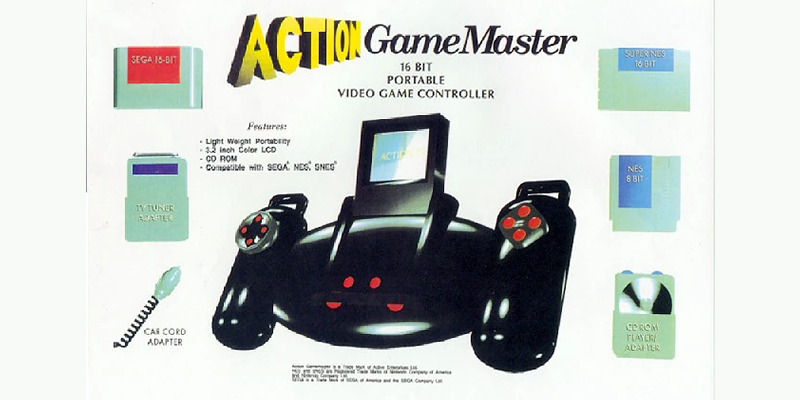
1. Action GameMaster
Action GameMaster was an unreleased 16-bit gaming console with 3.2-inch LCD screen from Active Enterprises, a small video game developer. The company announced plans for the console at the 1994 CES trade show. Likened to Nintendo’s GameBoy, the console would have been able to run game cartridges from Nintendo, Super Nintendo and Sega Genesis, along with Active Enterprises’ own games.
What happened? Let alone the fact that developing such a console seemed unfeasible given the current state of technology at the time and the estimated $500 price tag, Active Enterprises moved away from video game development following CES.
2. Amiga Walker
In 1996, not long after Escom AG, a German computer company, purchased the rights to the Commodore and Amiga computer patents, the company unveiled the Amiga Walker. It was slated to go into production that summer, with a release date before Christmas.
The Amiga Walker also had an interesting design. “Affectionately dubbed the ‘Hoover,’ the new Amiga was designed not to look too much like a computer so that it can easily blend into your living room without visitors thinking you are some sort of computer nerd,” Amiga Magazine, a publication dedicated to the Amiga, reported. “You could quite easily introduce this new Amiga to people as, ‘My silver box, that allows me to connect to the internet and do other cool things.’”
What happened? Escom declared bankruptcy in the summer of 1996 before the Amiga Walker could be released. Even if it had been released, the Amiga Walker would have likely been “woefully outdated,” Ars Technica reported in a series on the history of the Amiga line of computers.
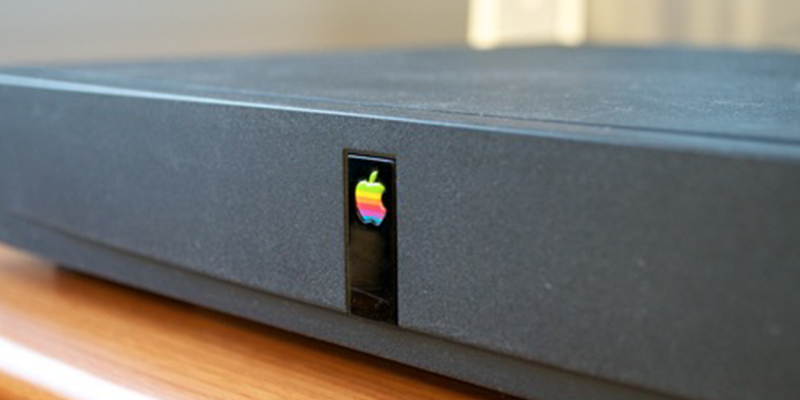
3. Apple Interactive Television Box
The Apple Interactive Television Box was essentially a device to allow televisions to access cable and satellite channels. It was developed in 1993 and unveiled in 1995 at a tradeshow organized by the National Association of Broadcasters. Also known as the Apple Set-Top Box, it ran Apple’s OS 7.1.1 operating system, weighed seven pounds, came with a remote control and was compatible with other devices like CD-ROM drives. It also allowed users to fast forward and rewind shows. Content like games shows and children’s shows were in development for the device, the online tech publication Engadget reported.
What happened? Though a limited number of the set-top box were produced for tests in parts of Europe and the United States — in partnerships with telecommunication companies like Bell Atlantic — Apple never mass produced it nor made it available to consumers.
4. Apple WALT
Approximately 14 years before the debut of the iPhone, Apple had another phone in the works called WALT, which was short for Wizzy Active Lifestyle Telephone. Announced in 1993 at the company’s Macworld Event, WALT was developed in partnership with the telecommunications company Bellsouth.
Apple’s prototype wasn’t a mobile phone, but it was smart. It had fax capabilities, an internal address book and a message pad feature where users could scribble notes on the touchscreen with the device’s stylus pen. It also had different ringtones, or “WALT Noises,” and a built-in speakerphone.
What happened? Only a few prototypes were produced before the concept was abandoned, according to AppleInsider. One prototype did pop up on eBay and sold for $8,000 in 2012, which has fueled the popularity of this vaporware example.
5. Atari 2700
Set for release in 1981, the Atari 2700, is another example of a gaming console that’s now deemed vaporware. It was marketed as a follow-up to the popular Atari 2600 console that had come out four years earlier. This new version would have come with wireless controllers that featured a joystick and paddle, according to Kotaku, a gaming publication.
What happened? Apparently, the controllers were the reason behind Atari 2700’s demise.
“Those controllers were really the main reason the system was never released,” John Hardie, co-founder of the National Videogame Museum, told Kotaku in 2017. Hardie also acknowledged that the extended range of the controllers — they were rumored to reach as far as 1,000 feet — played a role in the console’s demise.
“Imagine living in an apartment building where that 1,000 foot range could potentially affect three or four other systems,” he said, adding that the controllers weren’t limited to working on one specific console.
6. Gizmondo Widescreen
The Gizmondo Widescreen was billed to be a larger version of Tiger Telematics’ portable video game console that debuted in 2005 with 14 games, like Sticky Balls. The widescreen version, which was planned to be released the following year, would have had a 4-inch display — up from 2.8 inches — WiFi, bluetooth and an integrated 2 megapixel digital camera.
What happened? Known to “overpromise and underdeliver,” according to Engadget, Tiger Telematics’ Gizmondo sold less than 25,000 units. Before the widescreen version was released, Tiger Telematics declared bankruptcy with $300 million in debt, while company executives were outed for their ties with the Swedish mafia, Input reported in 2019.

7. Half-Life 2: Episode Three
Half-Life 2: Episode Three was a video game slated to be released in 2007 by developer Valve Corporation. Announced in 2006, the game was intended to be the last title in a trilogy of games following the original Half-Life 2 video game, but it was ultimately canceled and declared as vaporware by Wired by 2011.
What happened? In a 2011 interview with Develop magazine, Gabe Newell, president of Valve Corporation, said the company was moving away from episodic game content, insinuating that shifting development priorities stalled Half-Life 2: Episode Three. In 2020, Valve level designer Dario Casali explained to IGN that the game never releasing was partially due to unintended responsibilities increasing over time, Valve’s focus readjusting to develop the Source 2 game engine and a “lack of creative spark.”
8. Infinium Phantom
Announced by Infinium Labs in 2002, the Infinium Labs Phantom was a video game console that would have allowed users to download games directly to the device, rather than using cartridges or CDs that other companies relied on.
What happened? Infinium Labs released a prototype of the gaming console in 2004, with a planned release date for later that year which kept getting pushed. In 2006, the Infinium Phantom was “delayed indefinitely,” according to a Gizmodo report from 2021. The tech publication attributed the Phantom’s demise to a fatal combination of too much hype and not enough money, along with a dearth of games.
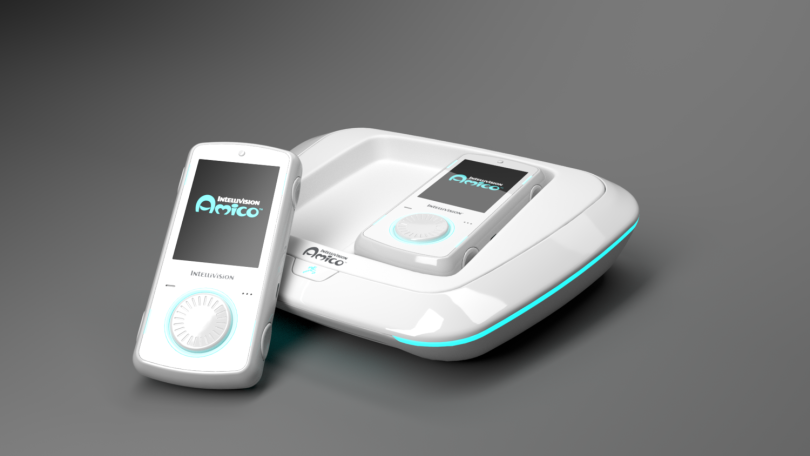
9. Intellivision Amico
Intellivision Amico is a video game console that was set to be released in 2020 by Intellivision Entertainment, though it remains in ongoing development. The console features two smartphone-like controllers with touchscreens and motion sensors, with an aim to make gaming experiences family-focused and accessible to all types of players.
What happened? Amico was revealed by Intellivision in 2018 with an initial release date of 2020, but the console has experienced repeated delays since. This has mainly been due to supply shortages as a result of the Covid-19 pandemic. In 2023, CEO of Intellivision Phil Adam announced that manufacturing Amico consoles in bulk would “require securing additional investment,” with promises to move Amico development forward but with no new official release date.

10. Ovation
Considered one of the most “egregious” examples of vaporware, Ovation combined word processing, spreadsheet, data management and communication all within a single software package. Developed by Ovation Technologies, Ovation was announced in 1983.
What happened? Though a demo version of the software was ultimately unveiled, Ovation went bankrupt before the product could be released. According to the New York Times, the demo was fake — it was used to drum up funding — and the software never even existed.
11. Palm Foleo
Dubbed a “mobile companion” for Palm’s Treo smartphone, the Foleo was essentially a small laptop or “netbook” with a 10-inch screen that would have synched with the Treo allowing users to access email, attachments and other files, Ars Technica reported in 2007 when the device was announced. With a Linux operating system, users would have been able to operate the Foleo as a standalone device and expand its memory via slots for compact flash cards. It would have cost $500.
What happened? The Foleo was abandoned in 2007, just a few months after it was announced. The company’s CEO cited market research that showed Foleo required “a number of improvements” that the company could not afford.
12. Play Station
Conceived out of a partnership with Nintendo and Sony, the concept, nicknamed the Play Station — note the spacing — was a dual-format gaming console announced in 1991. It would have been able to host Super Nintendo game cartridges and games on CD-ROMs, according to Ars Technica.
What happened? Contract negotiations ultimately fizzled between Nintendo and Sony, with Nintendo taking legal action to prevent Sony from going ahead with the project alone. Sony prevailed, though only 200 prototypes were rumored to be created, according to Ars Technica. (One sold for $360,000 in 2020, according to CNN.)
In 1994, Sony would go on to release its own gaming console, the PlayStation.
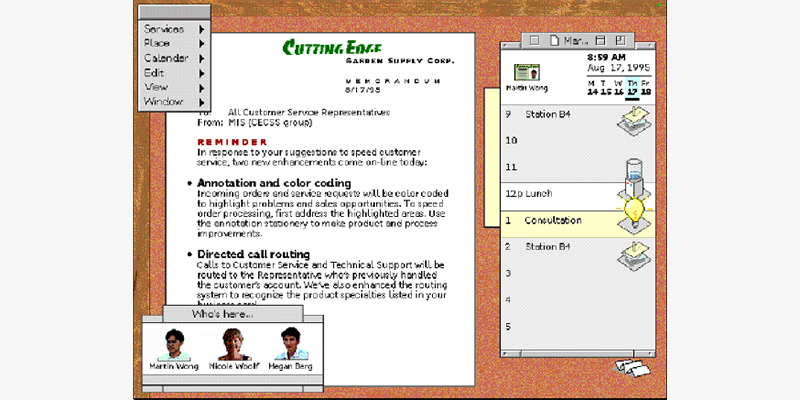
13. Pink Operating System (TalOS)
Pink was the codename for an object-oriented operating system Apple began developing in the 1980s. It later became TalOS when Apple partnered with IBM and Hewlett Packard, forming Taligent, to continue development of the operating system with the hopes that it would rival Microsoft Cairo and NeXTSTEP from Apple’s co-founder Steve Jobs’ NeXT Computers.
What happened? IBM ultimately assumed sole ownership of Taligent. In 1995, TalOS was sent to beta testers, but ultimately abandoned before it was released to consumers.
14. Sega VR
Given the hype around the metaverse and virtual reality today, Sega’s virtual reality headset would have been decades ahead of its time. Unveiled by the Japanese gamemaker in 1993, Sega VR had two LCD screens built into the headset, head-tracking sensors and stereo headphones. With a price point of $199, Sega also planned to release four games like Iron Hammer and Matrix Runner for the headset.
What happened? After the prototype was released in 1993, people who tested Sega VR complained of headaches and motion sickness. According to Design News, researchers warned the company that extended use of the headset may be dangerous.
15. Star Fox: Assault
In 2002, Nintendo, in partnership with the Japanese video game maker Namco, announced it was developing Star Fox: Assault, a third-person shooter video game for its GameCube console. The company also announced a version for arcades, where it was rumored that players would hop in the game’s cabinet, much like they would a car, and then close the door to play. It was also believed that portable memory cards would allow some level of integration between the GameCube and arcade versions.
What happened? While Star Fox: Assault came out in 2005 for the GameCube, the arcade version never did. It’s believed that the arcade cabinet that would have housed the game was too expensive. Additionally, the waning popularity of arcades may not have helped the game’s cause.

16. Victorinox 1TB Solid-State Drive Swiss Army Knife
At CES in 2012, Victorinox unveiled a Swiss army knife with one terabyte of solid-state memory. With a blade, scissors and combination file and screwdriver, the knife was set to sell for $2,000, according to a CNET report covering the announcement.
What happened? Though Victorinox eventually released other versions of their famed knife with far less storage capacity — like a 32-gigabyte version — the one terabyte knife has yet to be released.
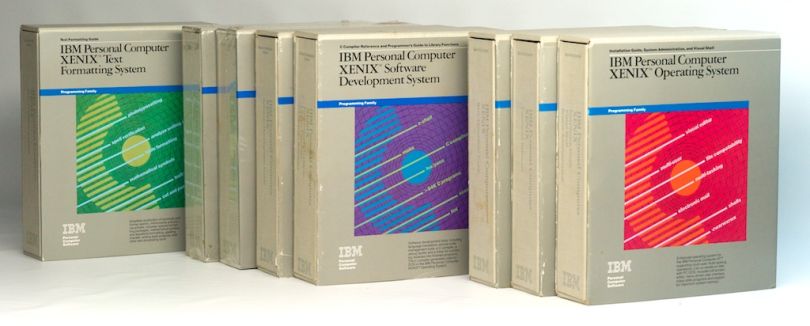
17. Xenix
Xenix is a discontinued version of the Unix operating system that was licensed by Microsoft from AT&T in the late 1970s. Microsoft started licensing Xenix to original equipment manufacturers in 1980, with no direct sale to end users. Companies like IBM and Intel sold computer parts utilizing the Xenix system, with Xenix’s last version releasing in 1991.
What happened? In 1982, AT&T began selling Unix System V, one of the first commercially available versions of Unix. This led Microsoft to develop the OS/2 operating system alongside IBM in order to compete in the computing market against AT&T, reducing focus on Xenix development. In 1987, Microsoft transferred ownership of Xenix to the the Santa Cruz Organization (SCO), who released a successor to the system known as SCO Unix. This new system presented technical advantages over Xenix and prompted it be used in future System V releases, solidifying Xenix’s abandonment after 1991.
Frequently Asked Questions
What is vaporware?
Vaporware describes hardware or software products that are developed and advertised by companies, but may never be released to the public.
What is an example of vaporware?
Apple Interactive Television Box is an example of vaporware, as it began development but was never made available to consumers.
Why is it called vaporware?
The “vapor” of vaporware signifies products (wares) that appear to dissipate or never fully form, much like vapor itself.

